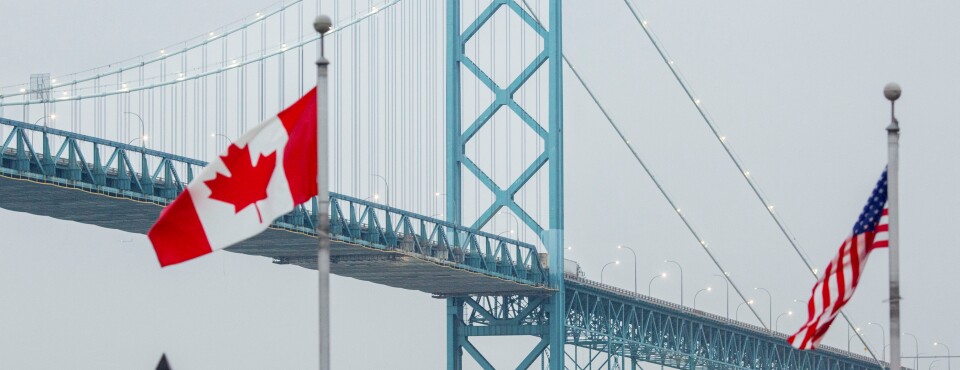For years, commentators have warned that implementing a digital services tax in Canada was a misguided policy that risked provoking strong opposition from the US—an outcome that ultimately materialized.
Now that Canada has canceled its DST, Canadian taxpayers appear to be the biggest losers, having borne the administrative costs of a tax that won’t raise any revenue.
Canada rescinded its DST on June 29, the night before the first payments were due. The announcement ended a saga that began in 2021, when Canada proposed DST legislation—the same year that Canada agreed with the Organization for Economic Cooperation and Development and 135 other countries to limit the proliferation of unilateral DSTs.
It was clear from the outset that the proposal wouldn’t be received well by the US—home to most of the affected taxpayers. President Donald Trump had threatened to end all trade discussions with Canada, one of its largest trading partners, and impose a fresh tariff rate in early July in retaliation for the digital tax.
By the time the DST was canceled, however, many companies had already made significant payments to the Canada Revenue Agency, which confirmed that it will waive the requirement to file a DST return and not enforce any DST payments.
Canada’s DST had applied to revenue from online marketplaces, social media platforms, sale and licensing of user data, and online advertising. Projections estimated that the DST would bring in approximately C$7.2 billion ($5.3 billion) over five years—meaning the first payment, covering in-scope revenue for three years, was expected to amount to several billion dollars.
The CRA also indicated that Parliament must pass legislation formally repealing the DST before taxpayers can receive refunds for amounts already paid. The CRA’s position is that it has no legal authority to refund any DST payments until the legislation is repealed. With Parliament on summer break, and no clear timeline for passing new legislation, the earliest date for refunds would likely be mid- to late fall.
Typically, the CRA administers proposed tax laws as if they’re in effect when there is clear legislative intent. For example, the CRA insisted on administering the capital gains changes that were proposed in 2024, even though the legislation hadn’t been passed and its future remained uncertain.
While the CRA appears willing to collect payments based on proposed law, it won’t issue refunds until the DST legislation is formally repealed. This highlights an inconsistency in how the CRA handles collection versus refunds under pending legislation.
There are several ways the government could quickly address refunds for companies that already made DST payments without having to wait for Parliament to repeal the tax.
One option would be a remission order, which would instruct the CRA to refund taxes where collection is unreasonable or not in the public interest. Another would be to change the DST regulations by order in council—for example, by setting any of the relevant thresholds so high that no companies would be in-scope. Either of these alternatives could be implemented quickly without the need for Parliamentary action.
The original draft of the DST legislation contained operative provisions. But in the final version, most of those provisions were moved into the regulations. The purpose for this shift appeared to have been to provide flexibility in negotiations with the US—for example, to adjust measures such as the retroactivity of the tax without the need for Parliamentary approval if talks progressed.
The expectation among practitioners was that Canada could use this flexibility to resolve pressure points during negotiations. Instead, the government simply announced the full DST repeal through a press release, abandoning the tax without appearing to have obtained any concessions from the US other than resuming negotiations.
Some taxpayers didn’t pay the DST ahead of the June 30 deadline, while others did. This mirrors the experience of last year’s proposed trust reporting rules, where onerous reporting requirements were waived shortly before the requisite forms were due—well after most taxpayers had incurred significant compliance costs.
Based on these recent examples, it appears that waiting until the last possible moment to comply with tax reporting and payment requirements may be advantageous. Taxpayers that made DST payments before the June 30 deadline may now be left waiting months for refunds, especially given the current minority government, which could impede the timing and progress of legislation in Parliament.
The minority Liberal government will need opposition support to pass the requisite legislation to repeal the DST. This support could be influenced by the outcome of trade negotiations with the US. If Canada fails to secure a favorable trade deal, opposition parties may question the DST repeal’s rationale.
The DST was intended to be a backstop to the flawed OECD-led Pillar One multilateral process, which was itself intended to reallocate certain taxing rights to market countries. Canada’s experience suggests that a unilateral measure such as the DST that principally affects the US isn’t a good substitute to a negotiated approach that’s acceptable to other countries.
This article does not necessarily reflect the opinion of Bloomberg Industry Group, Inc., the publisher of Bloomberg Law, Bloomberg Tax, and Bloomberg Government, or its owners.
Author Information
Kaitlin Gray is a partner at Osler, Hoskin & Harcourt focused on tax controversy and international tax.
Patrick Marley is co-chair of Osler, Hoskin & Harcourt’s national tax group and former president of the International Fiscal Association’s Canadian branch.
Write for Us: Author Guidelines
